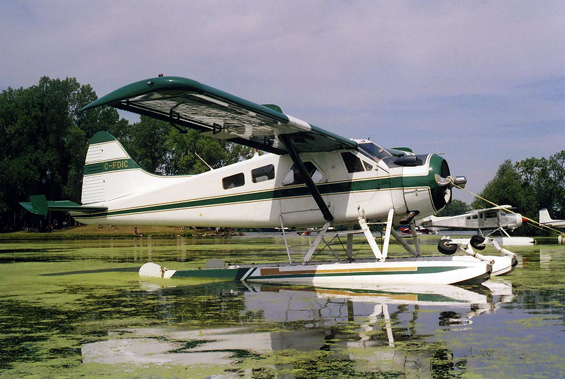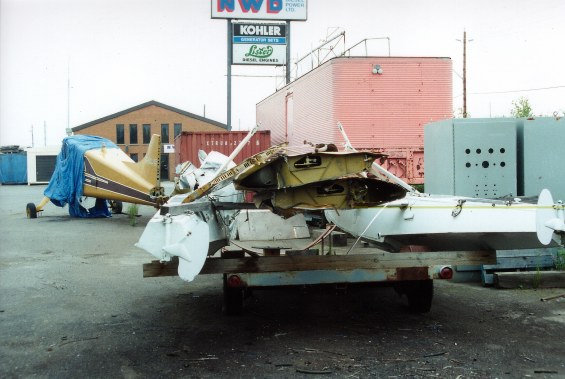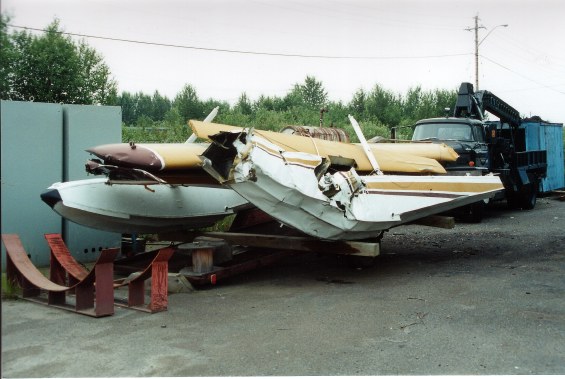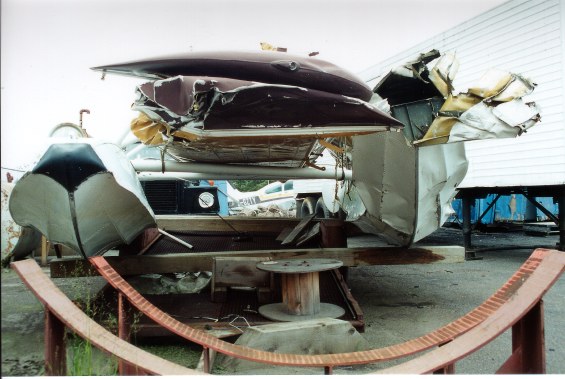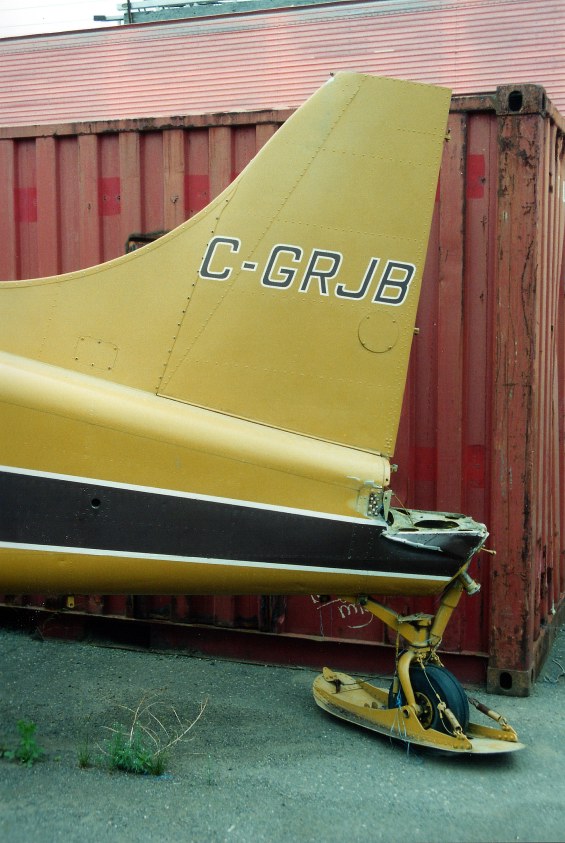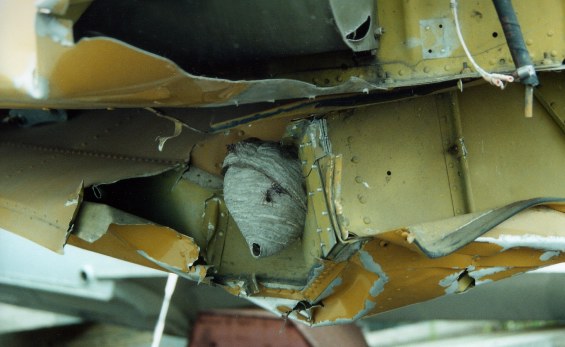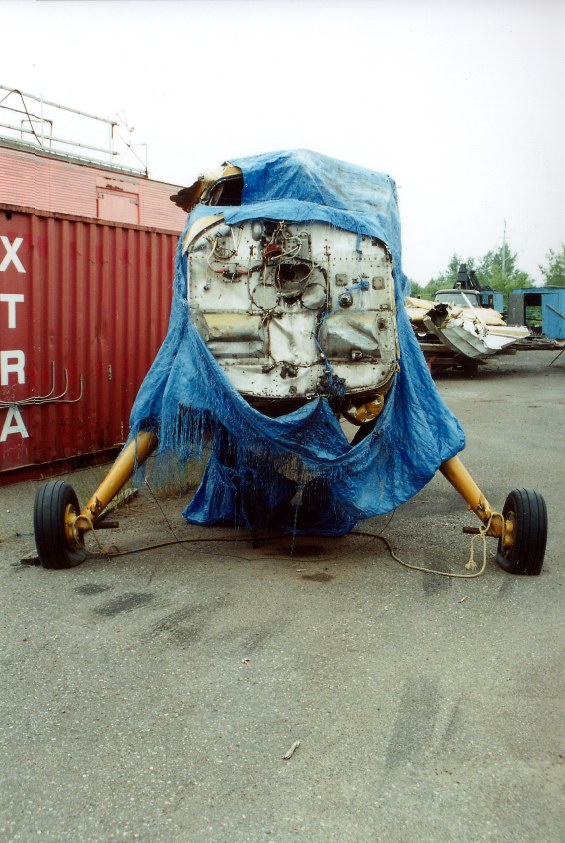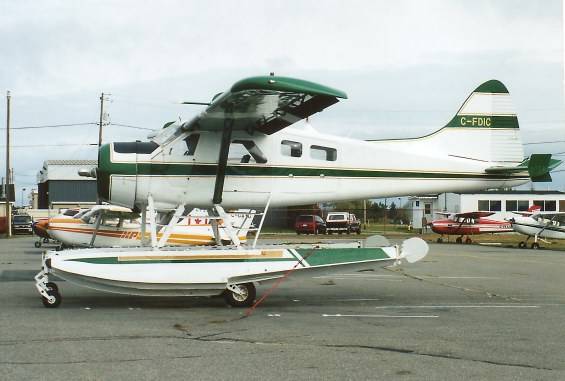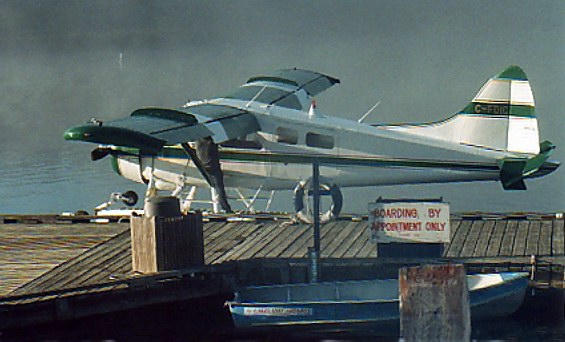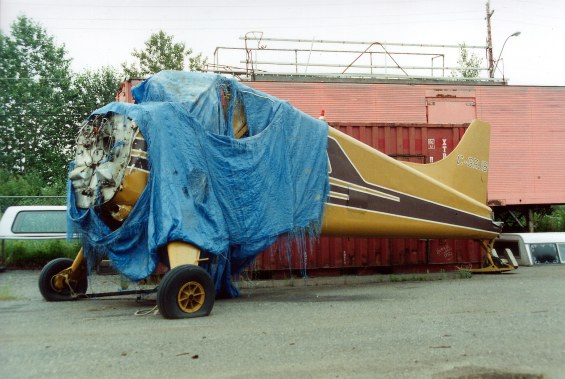• 57-6148 US Army # 1809. L-20 No. 810. Command A-14. Delivered 03-Jul-1958. Built as L-20A and re-designated U-6A in 1962.
• N62460 Shawano Flying Service, Shawano, WI. Canx 07-Oct-1975.
• C-GRJB Imported into Canada. Regd 1975.
• C-GRJB On Air Ltd., Thunder Bay, ON. Regd Jul-1976, Canx 04-Sep-1986. Initials of owner Robert J. Ball.
• C-FDIC Nor-Tech Aviation Ltd., Thunder Bay, ON. Regd 22-Jun-1987 Canx 18-Nov-1998. On CCAR.
Accident: 8mls SW of Escape Lake, ON. Lat 48.40N, Long 88.55W. 22-May-1988. The pilot / owner was using his float-equipped aircraft to conduct a 30-mile flight from his camp at Escape Lake, to Thunder Bay, ON. He had flown approximately eight miles when the aircraft engine began running rough, then lost all power. The pilot estimated that he could not reach a lake of suitable size and prepared for a forced landing in a swampy tree-covered area. During the descent, the pilot attempted to restart the windmilling engine using the fuel wobble pump. The engine sputtered to life, lost power, then restarted, and surged to high power just before impact. The aircraft struck trees, nosed into the ground, and both wings were torn from the fuselage. It then rotated through 180 degrees and came to rest on its left side. The pilot evacuated the aircraft and walked to a small lake, where he was rescued by another aircraft. The aircraft was badly damaged, but the pilot, who was wearing his shoulder harness, received only minor injuries. The fuel system for this aircraft incorporates three fuel tanks, front, centre, and rear, located in the belly of the aircraft. Each tank is designed with a recessed sump in the bottom of the tank where water and other contaminants will collect. Each sump is equipped with an outflow line and a quick drain fitting. The outflow line provides fuel to the aircraft engine when the tank has been selected. The quick-drain fitting is provided to enable removal of water and other contaminants from the sump. If the sump is not drained prior to flight, water which collects in the sump is immediately accessible to the fuel system. The front fuel tank had been filled at Thunder Bay prior to the flight to the campsite. The two other tanks were estimated to contain one or two inches of fuel each. No fuel was added at the campsite, and, prior to departure, the pilot checked the front tank sump and the delivery line strainer. He did not check the sumps for the centre and rear fuel tanks which had been near empty for a considerable period of time. Near empty fuel tanks are susceptible to the effects of condensation, resulting in water accumulation. The fuel wobble return line was disassembled, and the fuel removed contained approximately one-third water. The fuel dispensing tanks at Thunder Bay were inspected, and the system provided clear, uncontaminated fuel. During take-off and landing, the pilot operated the aircraft with the front fuel tank supplying fuel to the engine. He indicated that it was his habit to select one of the other aircraft fuel tanks in flight, to maintain the fuel level in the remaining tanks at a minimum. He could not recall if he had selected a second fuel tank during the occurrence flight but felt that he may have done so. The aircraft was not equipped with an emergency locator transmitter (ELT), as required by regulation. While this had no bearing on the time required to rescue the pilot, the lack of an ELT may have had serious consequences under different circumstances. The engine lost power because of water in the fuel system. The exact source of the water could not be determined; however, it is probable that the pilot selected one of the unchecked fuel tanks while in cruise flight. Water in the tank, formed as a result of condensation, was fed to the engine, causing the power loss. The pilot then reselected the front tank and actuated the wobble pump in an attempt to restart the windmilling engine. Pressure from the wobble pump and the engine driven fuel pump eventually purged the system and provided fuel to the engine. The engine then started and surged to high power.
• C-FDIC Robert S. Lipic, Sudbury, ON. Regd 18-Nov-1998.
Accident: Lake Temagami, ON. 25-Aug-2002. Pilot forgot to retract amphibious gear and flipped over when landing at Lake Temagami.
Note: Baron STOL mods.
• N1238B Regd 24-Jul-2017. Papa Golf Aviation LLC., OK. Regd 16-Aug-2017.
